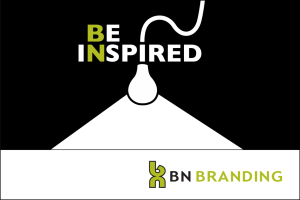![]() I’m always amazed by business owners and CEOs who spend considerable time and money building a brand, only to neglect the most important component of their brand: Their people.
I’m always amazed by business owners and CEOs who spend considerable time and money building a brand, only to neglect the most important component of their brand: Their people.
If you want to build a great brand, it’s wise start on the inside and work your way out. Seriously. If you can’t convince your employees to be your greatest brand ambassadors, who can you convince?
If they aren’t drinking the Kool-aid and building a brand with enthusiasm, who will?

It’s interesting what we learn about internal attitudes during a brand audit.
We often compare the company’s external market research data with prevailing internal attitudes. I’ve seen companies that accurately claim to have a 98 percent approval rating. “Customers love us,” they say.
But when we talk to employees, suppliers, past employees, and friends and family, a completely different tune emerges.
 Despite the happy customers, we often find a vocal group that is ready, willing and quite happy to talk smack about the company’s policies, procedures and practices.
Despite the happy customers, we often find a vocal group that is ready, willing and quite happy to talk smack about the company’s policies, procedures and practices.
Not only are those groups NOT great brand ambassadors, they’re brand bashers.
When that becomes a pattern your brand image, and ultimately your business, will take a hit
That’s why it’s so important to hire wisely, pay people well and treat them fairly.
That’s why branding is not just a marketing department thing, it’s an every department thing. That’s why you start on the inside.
That’s why the H.R. department actually plays a critical role in building a brand.
Yes, H.R.!
Just as there are sponsorships, ad campaigns, social media posts and even products that are “off brand,” some employees can also be off brand. Especially when it comes to senior management teams.
If your VP of Marketing is not on the same page as your CEO, you’re going to have some major challenges. If you have a parade of people leaving the company, your brand will take a hit.
In order to avoid those conflicts that create a revolving door of turnover, your H.R. department, or whoever’s recruiting and screening new recruits, needs to be immersed in your brand.
They should know your corporate culture inside and out and they should understand your purpose, mission, vision and management style. They HAVE to get it.
That’s how they find new employees who will become brand ambassadors rather than brand bashers.
Think about that. Of all the places you’ve worked, how many of those companies do you still talk up, and how many do you talk down?
Chances are, you’re still loyal to only a few.
I know people who worked at Apple, Amazon and Nike 20 years ago who still follow those companies fervently. They run in the shoes, invest in the stock and remain brand loyal long after they’ve moved on to different jobs.
Even when they’re off building a brand of their own, they’re still devoted to the old brand.
There are more than 2000 Starbucks employees who are attending Arizona State University free of charge, thanks to the Starbucks College Achievement plan. I bet those kids will be Starbucks fans for life.
In “Built To Last’ James Collins and Jerry Porrass show that great companies have “cult-like” cultures. (I think the word “cult” is not quite right. It’s more like a club.)
The point is, Collins proved that great companies have a very clearly defined ideology that you either buy into, or not.
“If you’re not willing to adopt the HP Way or the gung ho, fanatical customer service atmosphere of Nordstrom, then you’re not a good fit for those brands. If you’re not willing to be “Procterized” then you don’t belong at Procter & Gamble.”
You won ‘t see a Walmart executive or store manager leave for a position at Whole Foods. Not going to happen.

Patagonia, Nike, Whole Foods… companies with passionate, clearly defined cultures are not always easy to work for. In fact, they often demand more of their people than the competitor next door.
But the alternative is much worse… No culture to speak of. No clearly defined brand. No core ideology for people to rally around. Poor morale. High turnover. Weak leadership. Those are the hallmarks of a brand in decline.
Scott Bedbury uses a nice parenting analogy in his book A New Brand World.
“As brands evolve over time, they absorb the environment and karma of an organization, not unlike the way children are influenced by the place they call home. Both brands and kids thrive in an inspiring, learning, caring environment where they are appreciated, respected, protected and understood… So organizations, like parents, must instill values and behaviors that are not only positive, but consistent. ”
If the leadership of a company changes frequently, consistency goes out the door with them.
When you work on your brand from the inside out, your team shows a united front, and front-line employees become what Seth Godin calls “sneezers,” spreading the viral word of your brand in positive way.
When you neglect your people, and focus only on customers, disgruntled employees spread something much worse.
It’s up to you.
If you want more information on building a brand from the Brand Insight Blog, try this post.
If you’d like help building your brand, contact me here. Or connect with me on LinkedIn.



